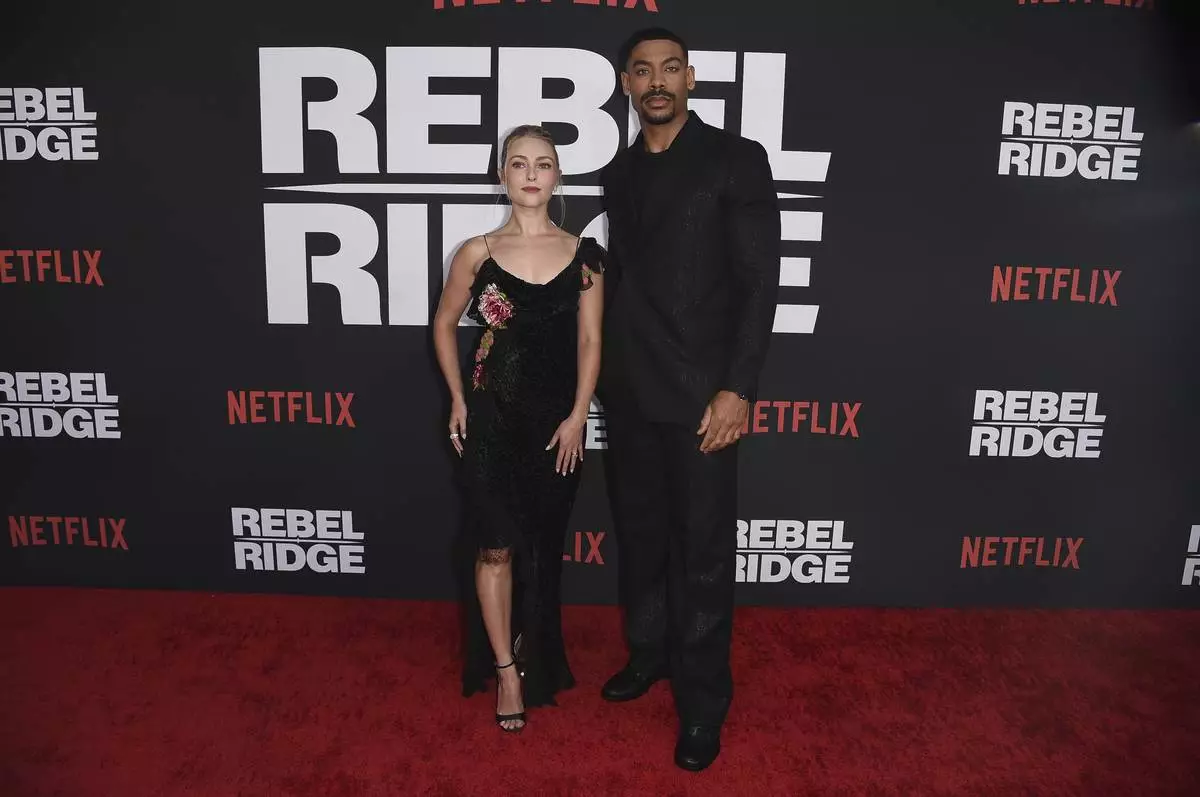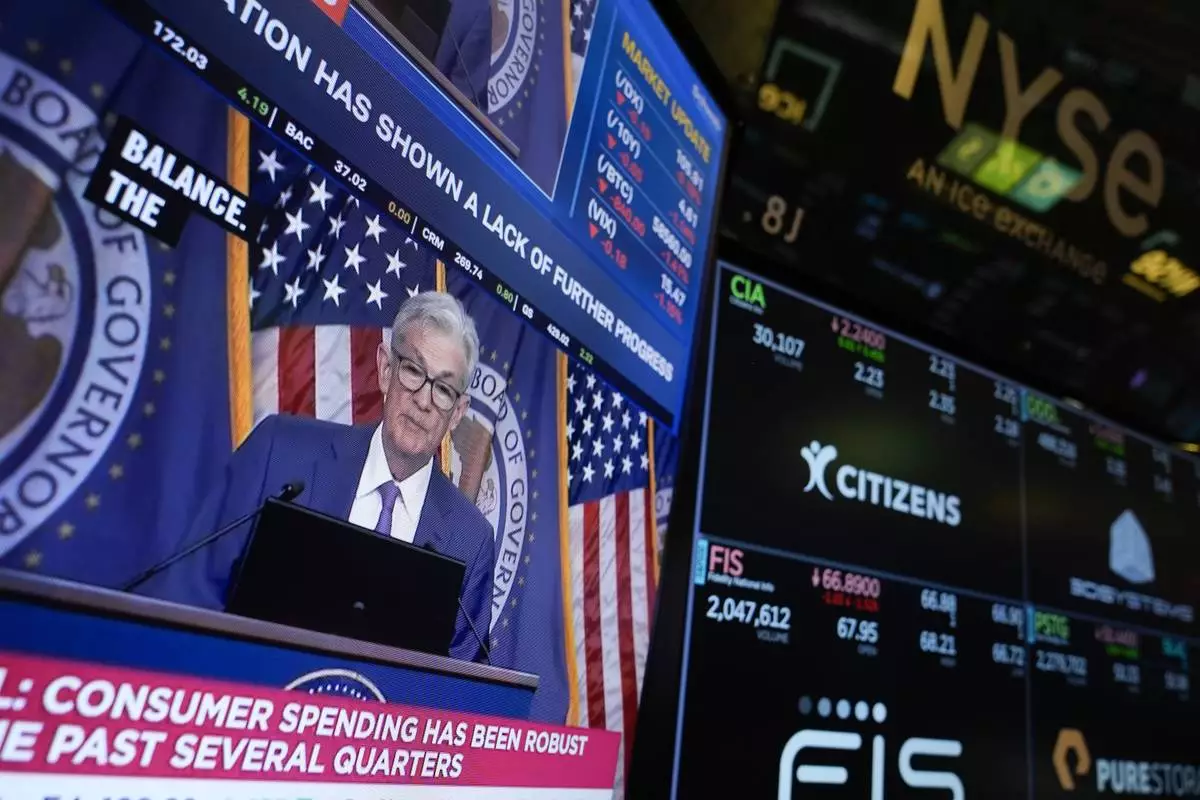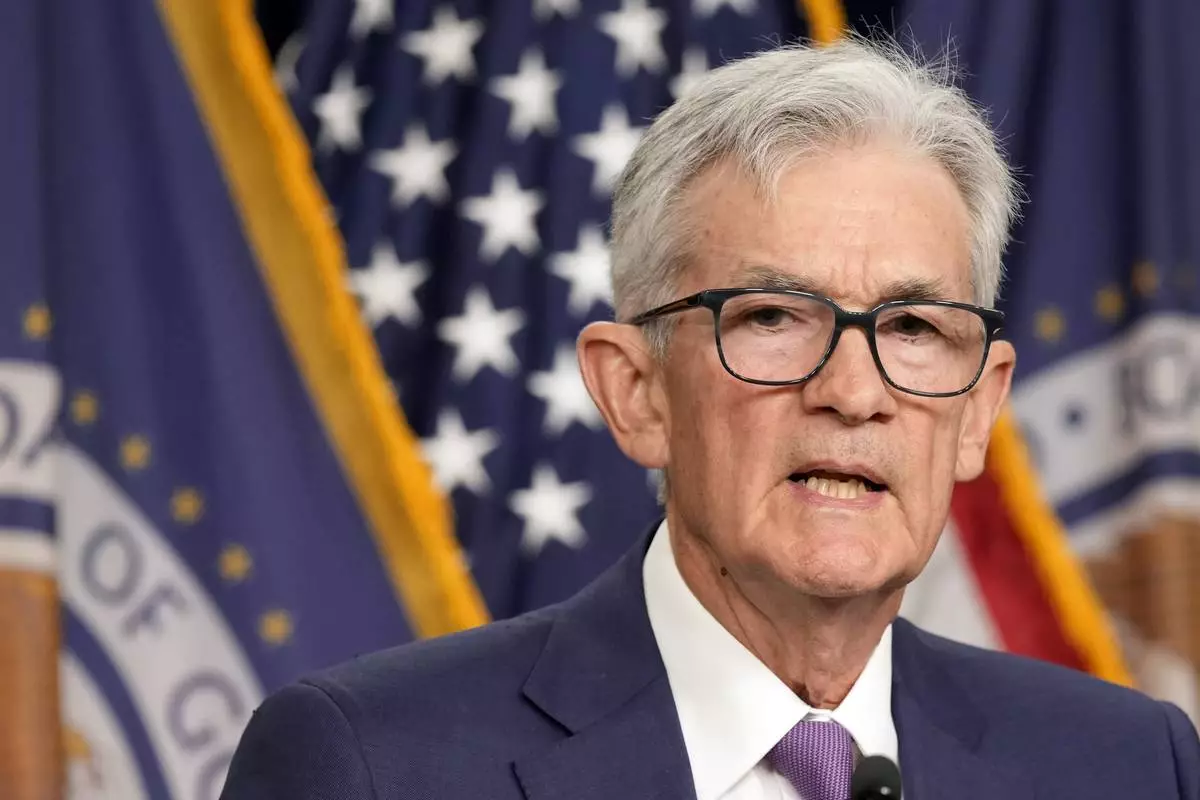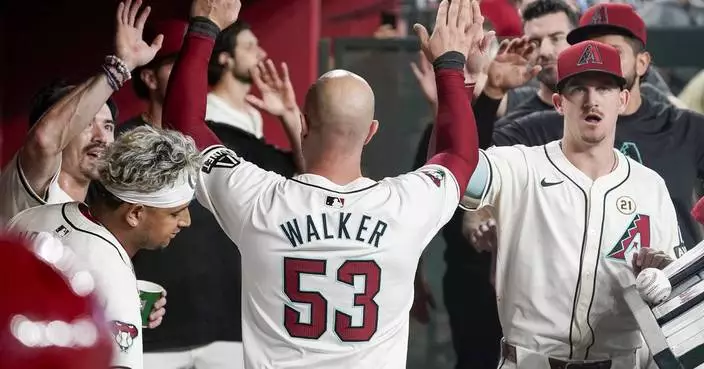NEW YORK (AP) — Before Aaron Pierre wanted to act, he wanted to be the fastest man in the world.
Growing up in West Croydon in London, Pierre was drawn to track and field. He thought gold medalist sprinter Maurice Greene was the coolest man on Earth. Pierre ran the 60-meter, the 100-meter and second leg of the 4x100 meter relay.
“Something that’s been instilled in me is to be calm in high-pressure situations – dude, one of which is the relay second leg,” Pierre says, speaking by Zoom from his apartment in Los Angeles. “When the whole school is out and you get that baton, you’ve got to just focus on one foot in front of the other.”
How fast Pierre can put one foot in front of the other is a point of interest not just because of the quickening pace of his career. (This December, he’ll be the voice of Mufasa in Barry Jenkins’ “Mufasa: The Lion King.” ) It’s also because for a guy who can be really fast, the 30-year-old Pierre, as an actor, has startling power in stillness.
In Jeremy Saulnier’s “Rebel Ridge,” a taut, suspenseful thriller that debuted Friday on Netflix, Pierre plays Terry Richmond, a former Marine who, while biking, is stopped by police and has a bag of money – bail money for his cousin – confiscated. What follows is a tense and evolving standoff with the rural town’s corrupt police department and its chief (a terrific Don Johnson). And until he isn’t, Pierre’s Richmond is unyieldingly patient and unthreatened. He’s a preternaturally calm martial arts expert. A demure Rambo.
“I had to employ a level of trickery on my brain,” Pierre says. “This character that Jerry Saulnier has written and created, is so badass. It’s understandably, deeply tempting to do too much. I said to Jeremy I had to do my best to normalize how cool Terry Richmond was.”
“Rebel Ridge” is one of those overwhelmingly clear moviegoing experiences: Pierre is so obviously a star in the making. From the moment he rides into town on a bike ("a modern-day horse," says Saulnier), he commands the screen with a singular potency. He has the body of a chiseled athlete but the heavy, melancholy eyes and resonant baritone (this is a man who's inheriting a role voiced by James Earl Jones, after all) of a Shakespeare-trained thespian.
Though Pierre has been seen in a number of earlier films and series (Jenkins’ “The Underground Railroad,” last year’s sci-fi drama “Foe” ), “Rebel Ridge” is his first lead role.
“Once I got on a Zoom with Aaron, I had only seen a clip of ‘Underground Railroad’ and that was enough to sell me,” says Saulnier. “I saw the chops. I saw his presence. I said, ‘That’s it. That’s my guy.’”
Saulnier, the writer-director of “Green Room” and “Blue Ruin,” is one of the most gifted genre craftsmen in Hollywood. “Rebel Ridge” is his first film in seven years, but it’s a reminder of his prowess in lending thrillers earthy authenticity and rich atmosphere.
“I miss texture,” says Saulnier. “Like seeing shocks on cars and knowing you’re in a real vehicle, even when you’re doing a dialogue scene. That level of veracity, I think, is being removed from moviemaking. If the top tier filmmakers with $100 million-plus budgets can’t sell an interior car dialogue sequence, let’s just go back to basics.”
Saulnier first cast John Boyega in “Rebel Ridge,” but Boyega departed the film just as it was starting production. Saulnier calls that rupture “water under the bridge.”
“John and I would both agree that it was the best path for both of us. There’s no ill-will at all,” says Saulnier. “Whatever pressure system that got created when we were looking to cast that role ended up this very unique experience. When I see the film and how people are reacting to it now, it’s just undeniable how amazing an actor Aaron Pierre is.”
Pierre grew up in a counsel estate (government housing) in West Croydon. His father, he says, is an actor, teacher and life coach; his mother has been, among other things, a project manager. He speaks glowingly about them and of his London youth.
“West Croydon is my favorite place in the world. It truly enormously contributed to the man I am today,” Pierre says. “It really instilled the importance of intentionality in me. It also contributed massively to how I view my journey, my career’s journey. For me, as much as I am deeply passionate about what I do and wouldn’t want to do anything else, before that I am a son, I’m a brother, I’m a friend. I’m many things before I’m an actor.”
Pierre began acting as a teenager and ultimately graduated London Academy of Music and Dramatic Art. In summer of 2018, he landed the role of Cassio in a production of “Othello” at the Globe Theatre that starred Andre Holland and Mark Rylance. Barry Jenkins happened to catch it and that night messaged Pierre through Twitter. “I was convinced that someone was having a laugh at my expense,” laughs Pierre. That led to “The Underground Railroad.”
Working with Jenkins, Pierre began finding himself as a screen actor. Jenkins, he says, taught him to put truth and honesty above all else in performance. On his first day on set, Jenkins approached him about an important scene that wasn’t landing.
“Barry came up to me and was like, ‘Aaron, I love what you’ve done on these first few takes, but we’re not landing on the truth right now. I need you to find the truth, and I need you to find it now because the sun is going down,’” Pierre recalls, chuckling.
“Rebel Ridge” brought many new demands, though, including being first on the call sheet. The film had had a tortured path to production, through the pandemic and Boyega's unexpected exit. But Saulnier remained committed to making it how he envisioned.
“There were certainly forks in the road where I could have tapped out, and been fine,” Saulnier says. “I dug in and made sure whatever version we ended up with, if it wasn’t the best version possible, it would have been better on a shelf. The fight was to hold the line at quality.”
Saulnier was inspired by real-life instances of civil asset forfeiture, which is when police can seize money purely on suspicion. There are some echoes of movies like “Mississippi Burning,” Saulnier grants, in how “Rebel Ridge” captures a Black man ensnarled by Southern racism. But Pierre's Richmond is a more modern figure, who encounters a prejudice that has merely gone just below the surface, hiding beneath legal cover.
“One of the many things that appealed to me about this character was his ability to regulate his emotions even in moments which are undeniably, blatantly unjust and intentionally so,” says Pierre. “He does it in a way that’s so not demonstrative and so not braggadocious that even when he’s articulating how patient he’s being with you, you still might not quite understand. He’s not bringing out his extensive martial arts certificates or resume. He’s just trying to share with you that you’re approaching a line.”
For Saulnier, “Rebel Ridge” is the first film he's made that, though it is enveloped with a sinister, shadowy darkness, is less reliant on high levels of brutality. Instead, “Rebel Ridge" heats up with a slow burn made possible by Pierre's simmering performance.
“It’s been a long time coming, this moment,” Pierre says, with gratitude. “ And I’m just doing my best to be present in it.”

AnnaSophia Robb, left, and Aaron Pierre pose at the LA Premiere of "Rebel Ridge" at the Egyptian Theatre on Tuesday, Sept. 3, 2024, in Los Angeles. (Photo by Richard Shotwell/Invision/AP)

This image released by Netflix shows Don Johnson as Chief Sandy Burnne, left, and Aaron Pierre as Terry Richmond in a scene from "Rebel Ridge." (Allyson Riggs/Netflix via AP)

This image released by Netflix shows Aaron Pierre as Terry Richmond in a scene from "Rebel Ridge." (Allyson Riggs/Netflix via AP)











